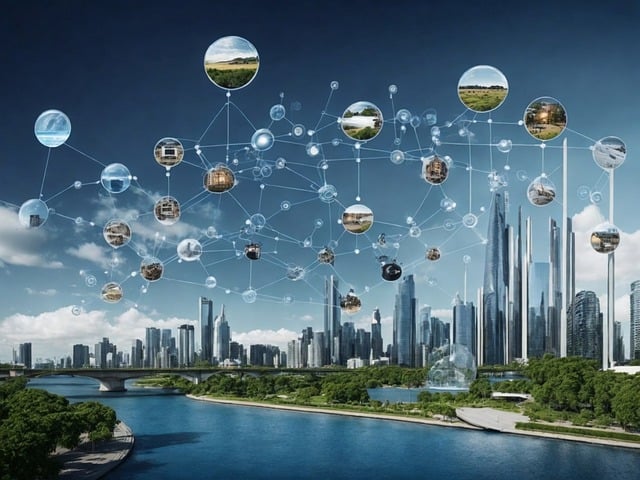By ATS Staff - March 9th, 2017
Latest Technologies
The advancement of mobile networks has revolutionized the way we live, work, and communicate. The transition from 4G to 5G is currently underway, bringing with it faster speeds and new possibilities. Meanwhile, the development of 6G technology is already in progress, promising even greater capabilities that could reshape industries and daily life. In this article, we’ll explore both 5G and 6G networks, their differences, and their potential impacts.
5G: The Current Evolution in Connectivity
1. What is 5G?
5G is the fifth generation of mobile networks, succeeding 4G (LTE). It is designed to deliver faster internet speeds, lower latency, and the ability to connect more devices simultaneously. The technology is being rolled out across the globe and is expected to become the dominant network standard over the next few years.
2. Key Features of 5G
- Speed: 5G networks can theoretically reach speeds of up to 10 Gbps, which is 100 times faster than 4G. This allows for near-instant downloads and smoother streaming of high-definition content.
- Latency: 5G reduces latency to as low as 1 millisecond (ms), compared to 50 ms for 4G. Low latency is crucial for applications like autonomous vehicles, remote surgery, and real-time gaming, where any delay can have significant consequences.
- Capacity: 5G has a much higher capacity to connect multiple devices. This is essential as the number of IoT (Internet of Things) devices, such as smart appliances and sensors, grows rapidly.
- Reliability: 5G is more reliable, providing uninterrupted service even in densely populated areas, making it ideal for smart cities and connected infrastructure.
3. Applications of 5G
- Enhanced Mobile Broadband: Faster speeds and better connectivity mean seamless video streaming, cloud gaming, and virtual reality experiences on mobile devices.
- Smart Cities: 5G enables the development of smart infrastructure, such as traffic management systems, energy-efficient grids, and connected public services.
- Industry 4.0: Manufacturing plants, warehouses, and supply chains are becoming more automated and connected with 5G, allowing for real-time monitoring and decision-making.
- Healthcare: 5G facilitates telemedicine, remote surgeries, and wearable health devices, improving healthcare access and quality.
- Autonomous Vehicles: The low latency of 5G allows autonomous vehicles to communicate with each other and with infrastructure in real time, increasing safety and efficiency.
6G: The Next Frontier
1. What is 6G?
6G refers to the sixth generation of mobile networks, which is expected to succeed 5G in the 2030s. While still in the early stages of research and development, 6G promises to be a game-changer, offering unprecedented speeds, enhanced capabilities for AI-driven applications, and more sophisticated ways to connect the digital and physical worlds.
2. Key Features of 6G
- Terahertz Frequency Bands: 6G is expected to operate in the terahertz (THz) frequency spectrum, which could offer data transfer speeds of up to 100 Gbps to 1 Tbps, significantly surpassing 5G.
- AI Integration: 6G networks are expected to integrate more artificial intelligence (AI) and machine learning (ML) technologies to optimize network operations, data transmission, and security in real time.
- Holographic Communication: 6G could enable real-time holographic communication, making 3D video conferencing, immersive virtual environments, and advanced remote collaboration a reality.
- Ultra-Low Latency: While 5G offers 1ms latency, 6G could reduce this to microseconds, enabling even more advanced applications like high-precision robotics, space exploration, and brain-computer interfaces.
- Sustainable and Efficient: 6G is being designed with energy efficiency in mind. Networks will likely be more intelligent in managing power consumption, reducing the carbon footprint of communications infrastructure.
3. Applications of 6G
- Immersive Experiences: Virtual and augmented reality will take a leap forward with 6G, enabling real-time, ultra-high-definition interactions in virtual spaces for education, entertainment, and business.
- Brain-Computer Interfaces: 6G may facilitate direct communication between the human brain and external devices, enabling new forms of interaction and control.
- Remote Sensing: 6G could support advanced remote sensing technologies, such as detecting environmental changes, monitoring urban infrastructure, or even facilitating global environmental conservation efforts.
- Space Communications: 6G could play a key role in space exploration and satellite communications, allowing for more efficient data transmission between Earth and space.
Differences Between 5G and 6G
| Feature | 5G | 6G |
|---|---|---|
| Speed | Up to 10 Gbps | Up to 1 Tbps |
| Latency | ~1 ms | Microseconds |
| Frequency | Up to 100 GHz | Terahertz frequencies |
| Key Technologies | IoT, AI, cloud computing | AI, quantum computing, brain interfaces |
| Applications | Smart cities, autonomous cars, IoT | Holographic communication, space tech |
The Road Ahead
5G is already transforming industries and daily life, but its full potential has yet to be realized as network coverage expands and new applications emerge. However, as 5G becomes widespread, research into 6G will accelerate, pushing the boundaries of what’s possible in communication technologies.
The transition from 5G to 6G will not only mean faster internet but will also pave the way for a fully connected world where digital, physical, and biological systems merge. While challenges like infrastructure costs, data security, and regulatory policies need to be addressed, the possibilities are immense.
5G is here to stay for the next decade, but the horizon is already shifting towards a future defined by 6G, promising an era of hyper-connectivity, intelligent systems, and transformative technologies.
Popular Categories
Agile 2 Android 2 Artificial Intelligence 48 Blockchain 2 Cloud Storage 3 Code Editors 2 Computer Languages 11 Cybersecurity 8 Data Science 13 Database 5 Digital Marketing 3 Ecommerce 3 Email Server 2 Finance 2 Google 3 HTML-CSS 2 Industries 6 Infrastructure 2 iOS 2 Javascript 5 Latest Technologies 41 Linux 5 LLMs 11 Machine Learning 32 Mobile 3 MySQL 2 Operating Systems 3 PHP 2 Project Management 3 Python Programming 25 SEO - AEO 5 Software Development 41 Software Testing 3 Web Server 6 Work Ethics 2